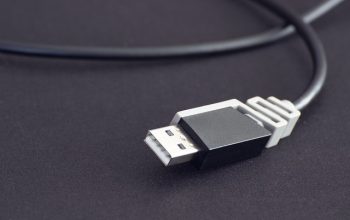When transitioning vehicle ownership, whether it’s a new or used car acquisition, understanding the vehicle title transfer process is paramount. This article demystifies the steps involved in transferring a title, from fulfilling DMV title transfer requirements to calculating and paying the necessary title transfer fees and costs. Whether you’re handling an in-state or out-of-state transfer, this guide will ensure you navigate the process with ease. Learn how to efficiently complete your car title transfer after purchase and explore resources like DMV title transfer checklists for added assurance.
- Comprehending the Vehicle Title Transfer Process
- Gathering Necessary Documents for DMV Title Transfer Requirements
- Steps to Follow for Title Transfer After Car Purchase
- Understanding Title Transfer Fees and Costs
- Navigating Out-of-State Title Transfers and Checklists
Comprehending the Vehicle Title Transfer Process

Navigating the vehicle title transfer process is a critical step following the purchase of a used car. This process entails a series of steps designed to ensure that ownership rights are accurately and legally transferred from the previous owner to the new one. To initiate this transition, individuals must first familiarize themselves with the DMV title transfer requirements specific to their state or jurisdiction. These requirements typically include completing the necessary forms, such as an Application for Title and Registration, providing proof of vehicle sale, submitting the current title if available, and offering identification and proof of insurance. Additionally, one must be prepared to pay the applicable title transfer fees and costs set by the Department of Motor Vehicles (DMV). These fees vary by state and may include registration taxes, titling fees, and any relevant sales tax based on the vehicle’s value. Understanding these financial obligations beforehand prevents delays and ensures a timely completion of the process.
For those transferring titles from out-of-state, additional considerations come into play. The process may involve extra steps such as emissions inspections or obtaining a new license plate, which are specific to the state where the vehicle is now being transferred. It’s imperative to consult the DMV title transfer checklist for your state to ensure all requirements are met. This checklist will guide you through each step, from the initial documentation to the final submission and approval of the transferred title. By adhering to these guidelines and understanding the intricacies of the vehicle title transfer process, car owners can seamlessly transition ownership and enjoy their new vehicles with the peace of mind that comes with legal compliance.
Gathering Necessary Documents for DMV Title Transfer Requirements

When initiating the vehicle title transfer process, one of the first and most critical steps is to gather all necessary documents as per DMV title transfer requirements. This typically involves collecting the current title or proof of ownership if the title is lost. For individuals purchasing a vehicle from a private seller, completing the appropriate transfer forms, such as an application for a certificate of title, is essential. These forms may vary by state, so it’s important to obtain the correct ones for your jurisdiction. Additional documentation often includes a bill of sale, which provides evidence of the transaction and can affect title transfer fees and costs. If the vehicle is financed, additional paperwork from the lienholder will be required to release the lien and complete the title transfer after car purchase.
Title transfer fees and costs are determined by state regulations and can include a range of charges such as transfer taxes, titling fees, and registration fees. It’s crucial to be aware of these financial aspects beforehand to ensure all necessary title transfer fees and costs are paid promptly. Once all documents are assembled, they must be submitted to the local Department of Motor Vehicles (DMV). The DMV will then process the application, conduct a vehicle identification number (VIN) inspection if necessary, and issue a new title in your name. For those transferring titles from out-of-state, additional steps such as emission and safety inspections may be required, depending on the state’s regulations. Adhering to these DMV title transfer requirements is key to a seamless transition of vehicle ownership.
Steps to Follow for Title Transfer After Car Purchase

When acquiring a used vehicle, navigating the vehicle title transfer process is a critical step to ensure legal ownership. The first step involves promptly notifying the Department of Motor Vehicles (DMV) in your state about the change in vehicle ownership. This typically requires completing the appropriate DMV title transfer forms specific to your jurisdiction. These forms may include details such as the vehicle identification number (VIN), seller and buyer information, and odometer disclosure if applicable. It is imperative to obtain the necessary paperwork from the previous owner and ensure its accuracy to avoid any delays or issues with the transfer.
Upon completion of these forms, you must submit them along with proof of vehicle sale price, if applicable, and the title transfer fees and costs associated with the process. The fees can vary depending on your state’s regulations, so it is advisable to check your DMV’s fee schedule beforehand. Additionally, if the vehicle was registered in another state, you will need to handle an out-of-state title transfer, which may involve extra steps such as a vehicle inspection and emissions testing to comply with your new state’s requirements. Ensure that all documents are submitted in a timely manner to expedite the processing of your title transfer after car purchase. Once all forms and fees are received and processed by the DMV, you will be issued a new title in your name, indicating complete ownership of the vehicle.
Understanding Title Transfer Fees and Costs

When navigating the vehicle title transfer process, understanding the associated fees and costs is crucial for a seamless transition of ownership. Title transfer fees and costs can vary depending on the state or region in which the transfer takes place. Typically, these fees are mandated by the Department of Motor Vehicles (DMV) and may include a title transfer application fee, registration fees, and possibly sales tax based on the purchase price of the vehicle. It’s imperative to be aware of these expenses before initiating the DMV title transfer requirements, as they contribute to the overall cost of transferring a car title after a car purchase. The amount you’ll need to pay can differ significantly from one jurisdiction to another, so it’s essential to check with your local DMV for precise figures. Additionally, failure to settle these fees promptly could lead to penalties or your title transfer being delayed. To avoid any complications, research the specific title transfer fees and costs applicable in your area, and include all relevant documentation and payment when submitting your application. This due diligence will ensure a smooth transaction and help you budget accurately for the entire process of how to transfer a car title post-purchase.
Navigating Out-of-State Title Transfers and Checklists

When transitioning a vehicle title from one state to another, the process involves additional steps compared to an in-state transfer. The vehicle title transfer process must align with both the new state’s regulations and the DMV title transfer requirements. Individuals should begin by researching their specific state’s DMV guidelines to understand the necessary documentation and procedures. Typically, this includes completing a title application form, providing proof of ownership, such as the previous title, and submitting an odometer disclosure statement if the vehicle is under ten years old. Additionally, applicants must satisfy the DMV title transfer fees and costs associated with the transfer, which can vary by state. These fees often include registration fees, titling fees, and any applicable sales taxes or use taxes, especially if the vehicle was purchased from an out-of-state seller.
To ensure a seamless transition, it’s advisable to utilize a comprehensive DMV title transfer checklist. This checklist serves as a valuable tool, helping car owners stay organized and compliant with all necessary steps. The checklist should include items such as the completed application form, proof of vehicle sale price if different from market value, proof of insurance, emission inspection certificates if required, and any lienholder information. By carefully following this checklist and understanding the title transfer fees and costs involved, car owners can navigate the out-of-state title transfer process with confidence, ensuring their vehicle is legally registered in their new state promptly after the car purchase.
When navigating the vehicle title transfer process, adherence to DMV title transfer requirements is paramount. This article has outlined the critical steps to ensure a seamless transition of ownership, from document collection to fee payment. Whether you’re handling an in-state or out-of-state transfer, following the detailed guide on how to transfer a car title is your best course of action. By understanding the associated title transfer fees and costs beforehand, you can prepare for any expenses involved without surprises. Remember, completing these steps correctly not only legalizes your ownership but also safeguards your rights as a vehicle owner. With careful attention to the outlined procedures, your title transfer will be executed effectively and efficiently, ensuring compliance with state regulations and setting a solid foundation for your new ownership journey.



